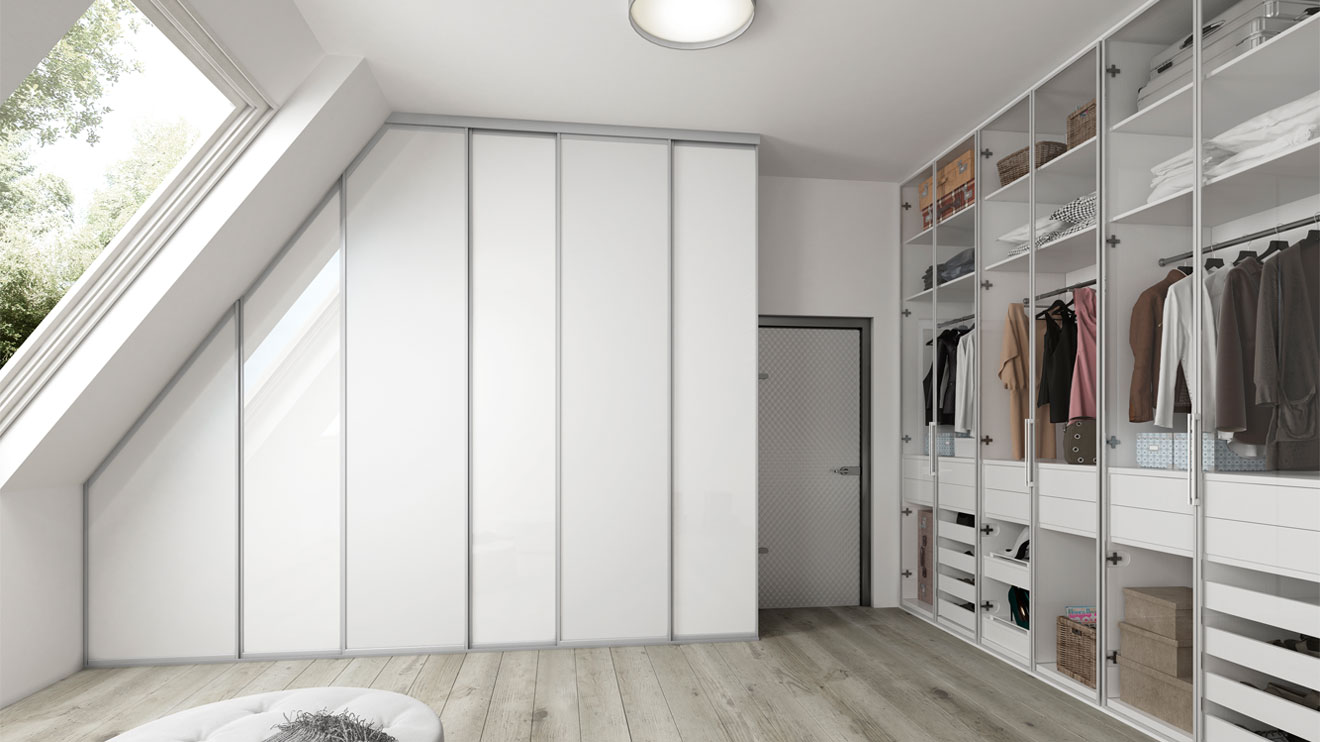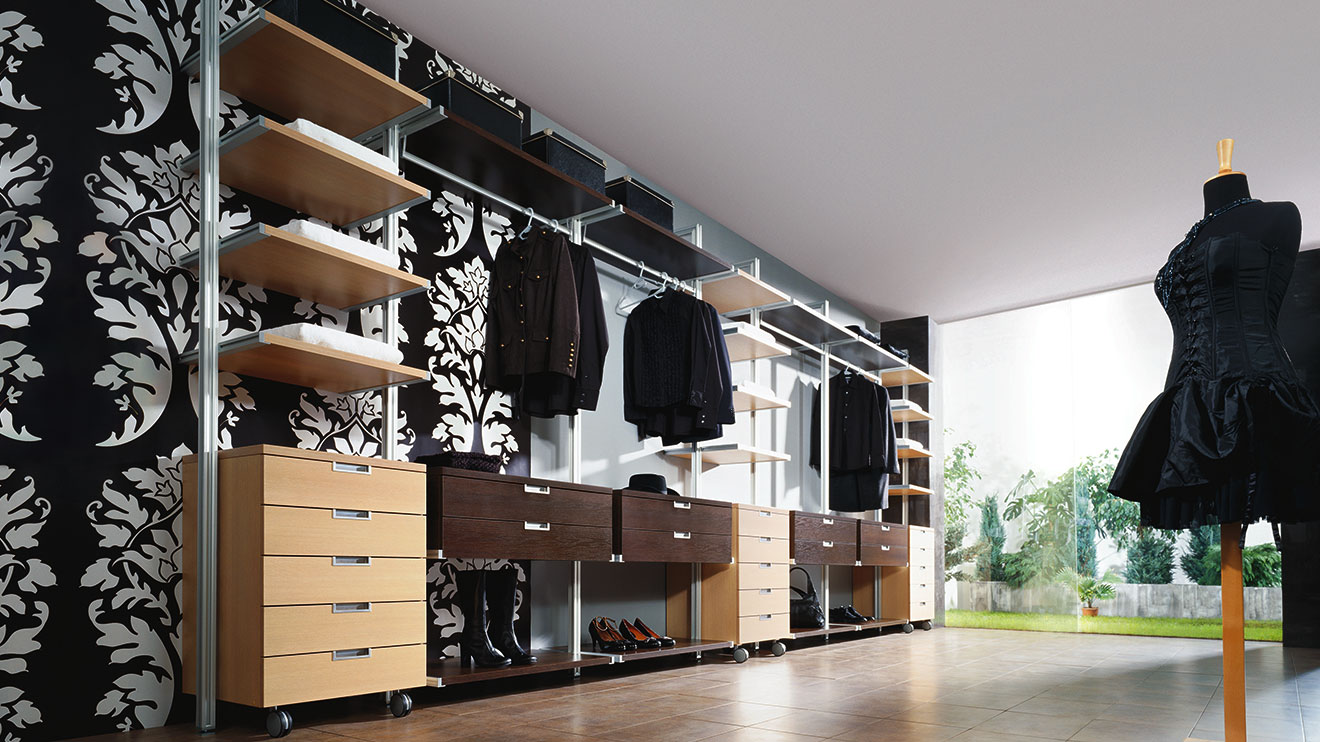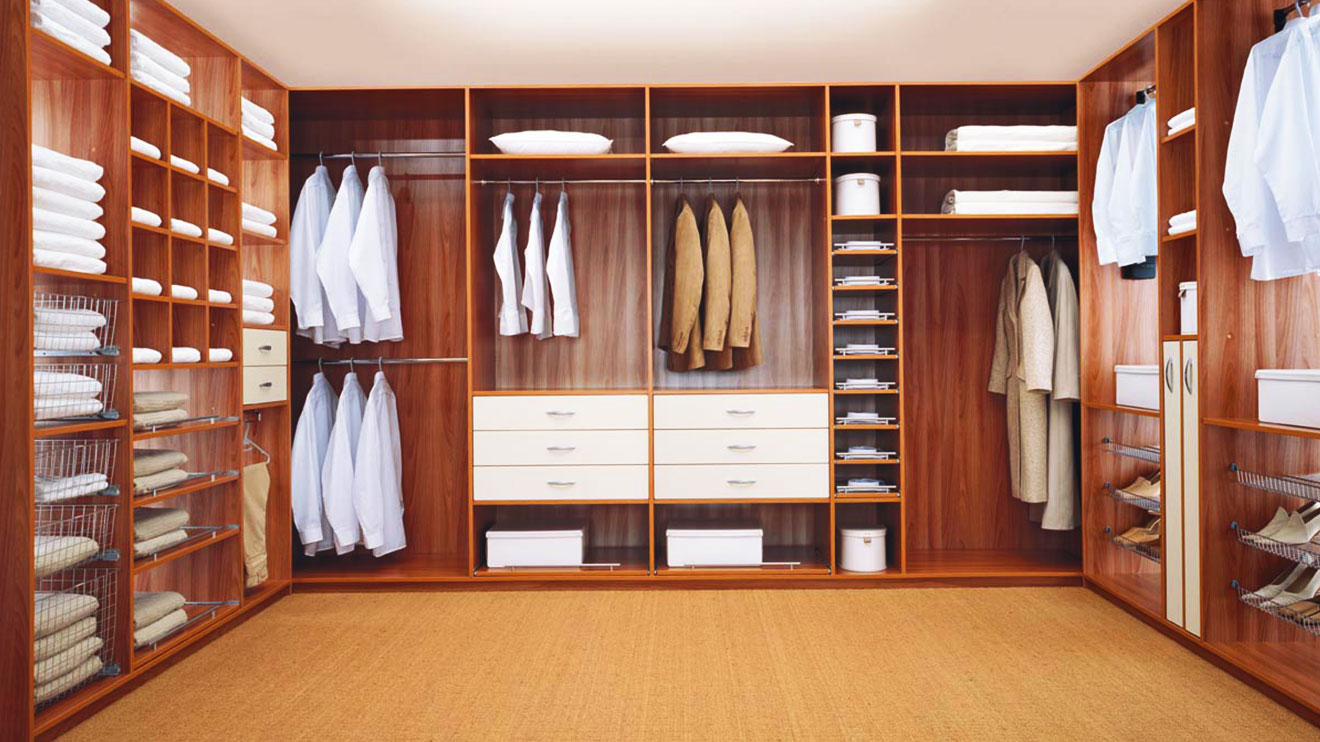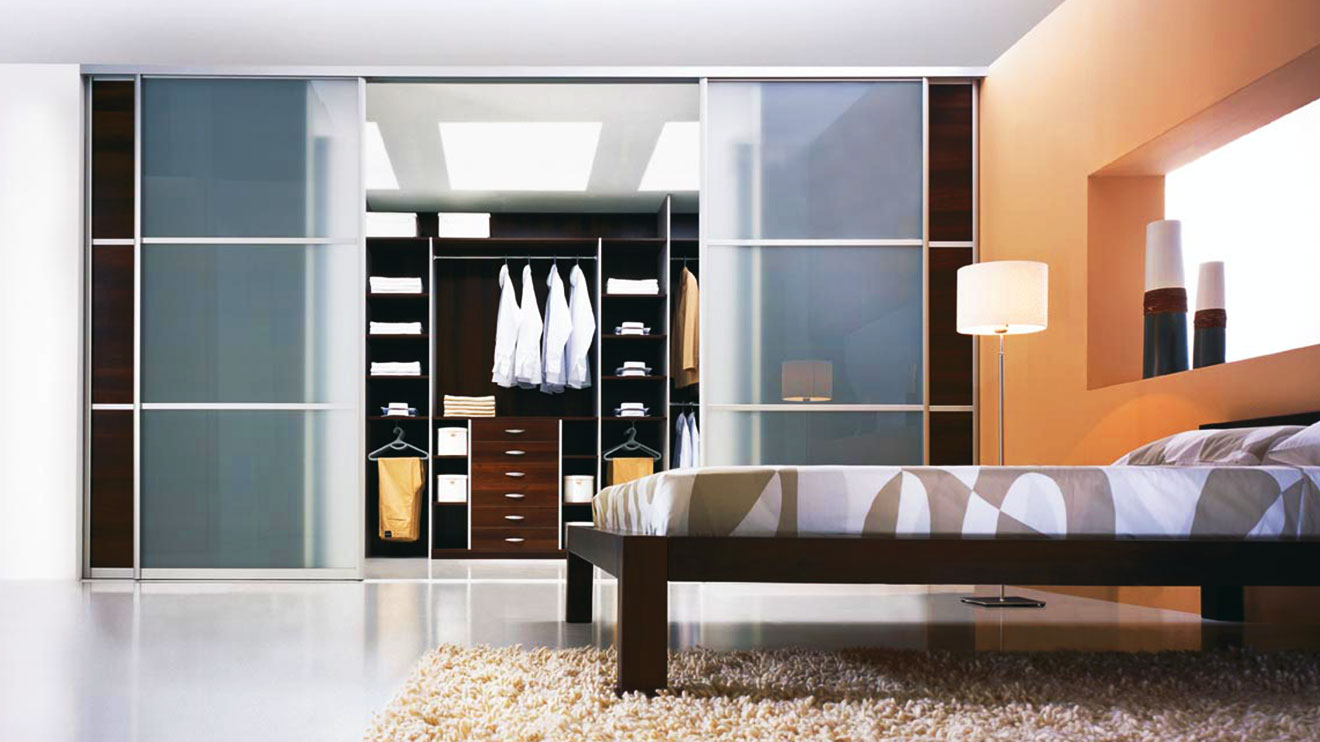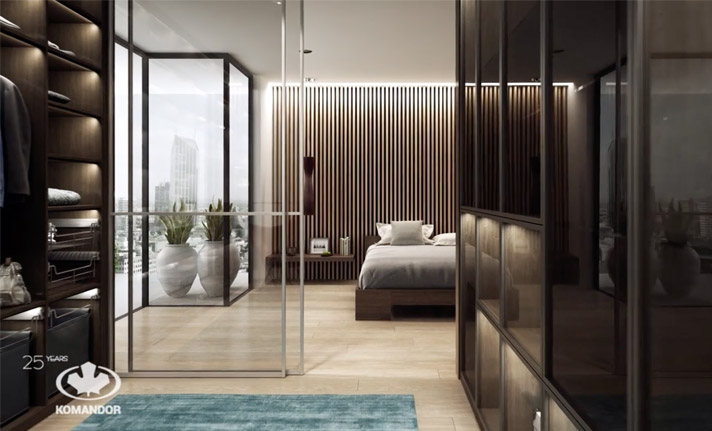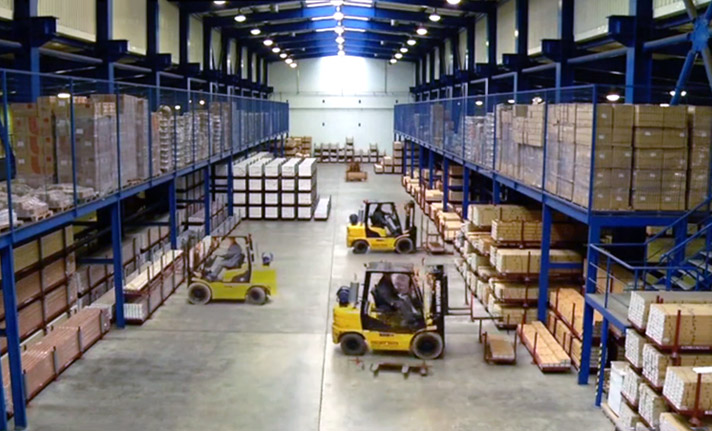Our walk-in options are based on creating a flexible space. Different structural elements are made to size and which can be fitted in almost every space, and using it to its limits. In some cases, separate rooms can be used as walk-ins, and sometimes we can design a walk-in for a recess. Slanted rooms can be turned into walk-ins - slanted doors or a special wall can be used for this. Inside the room hanger rods and shelves are installed to assist in properly organizing the whole space.
A walk-in has more than one function. It can also be used as a utility room to store hoovers, irons or ironing boards.
The best solution is to have a walk- in close to your bedroom or make it a separate entity by adding sliding doors or a partition. The design of a walk-in solely depends on your taste and on the types of materials, patterns and colours you choose.
Sliding doors are ideal for use with walk-ins because they do not take up any space by opening outwards. The insert material for your doors can be lacobel, loom, rattan, mirror, or board panel in a colour matching the one of the room. For the eco-conscious, we offer doors made of rattan, bamboo or looms. If you are interested in lighter and more ethereal look; go for milk glass or semi-transparent polycarbonate glass.
For those who prefer more transparent solutions, we recommend column or rod-shelving systems. Such walk-ins give the impression of lighter, more spacious areas that are very modern. In both systems, the profiles are made in anode natural (silver), which complement wooden board panels very well. The walk-ins made with column or rod systems have a huge advantage in that the drawers can be freely moved.
Nickel-plated rods with hangers allow for separating clothes and we can also accommodate hanging space for longer items. Hanger rods for short clothes can be fixed on two different levels with 105 cm between them. Hanger rods for longer pieces of clothing such as coats and dresses should be fixed on 180 cm level so that the bottom of clothes does not touch the floor.
In taller rooms, pantographs are recommended. They are hangers with a handle which you can lower to easily take down clothes; perfect for shorter people or those with a disability. Walk-ins should be equipped with various hangers for trousers, skirts, belts and ties to protect them against creasing and to help avoid constant ironing. Cross-hangers, installed under shelving are also a good space saving solution.
Different types of shelves; short, long, and deep are all essential parts of every wardrobe. Each shelf can serve as a storage space for different items like sweaters, sweatshirts, t-shirts etc. Because of their size, linen, towels, blankets can be stored on long and deep shelves. It is worth designing a special area for them like a linen closet, which can be located at the top of the wardrobe. Shelves closest to the ceiling are suitable for storing suitcases, travelling bags and bags.
Small textiles such as tights, underwear, socks and other smaller accessories which are difficult to store can be housed in drawers with laminated panels. Typically, drawers are 50 cm wide and 12 cm deep but they come in different sizes depending on need. Some drawers can be additionally equipped with special dividers to create separate compartments.
Practical pull-out elements of a wardrobe are wire baskets and openwork shelves. You can easily see what's inside without opening them. It also helps to keep the air circulated. In your walk-in you can also store shoes (every day and seasonal). The best solution is to choose pull-out shelves where you can mount extra handles or special bars to keep the shoes in their place.






